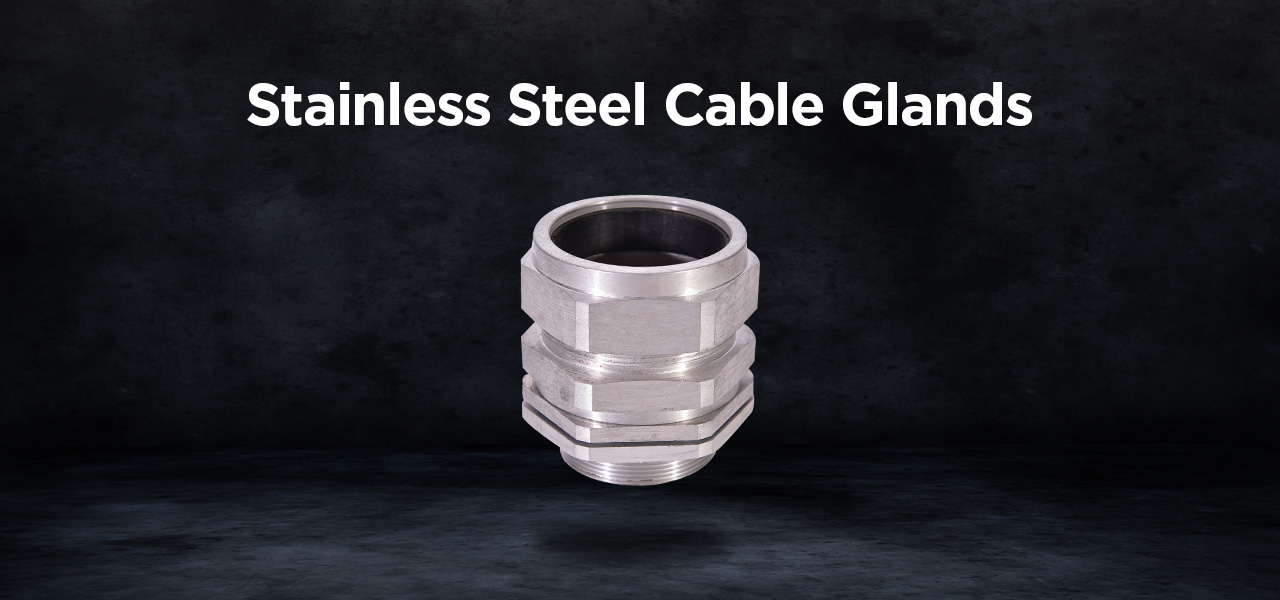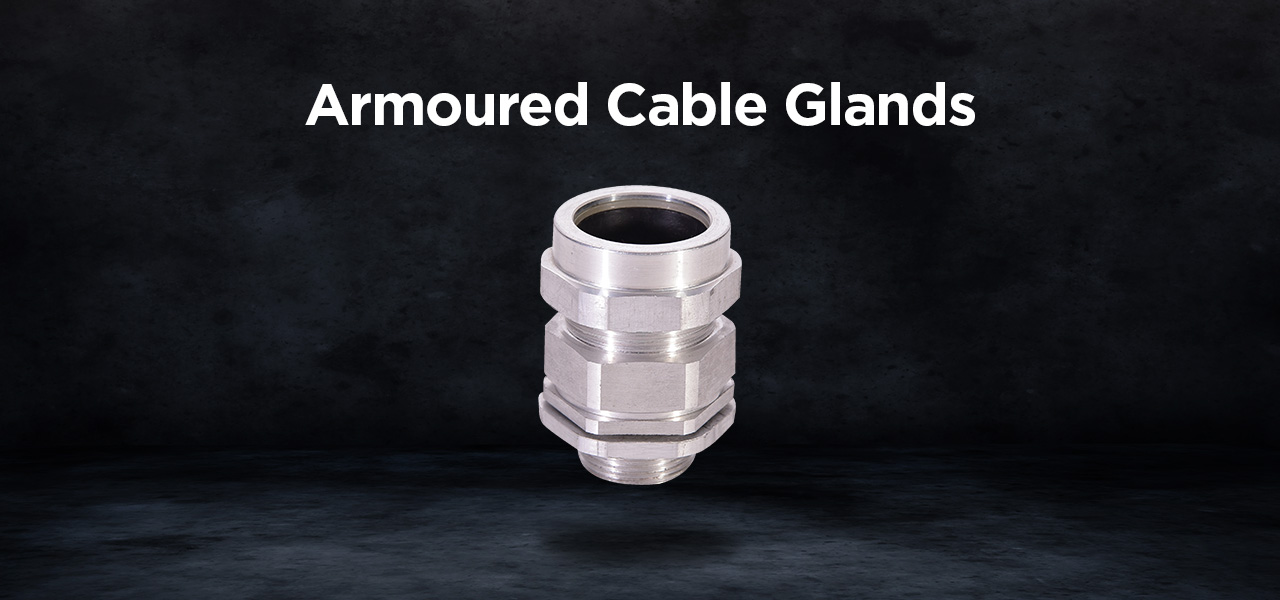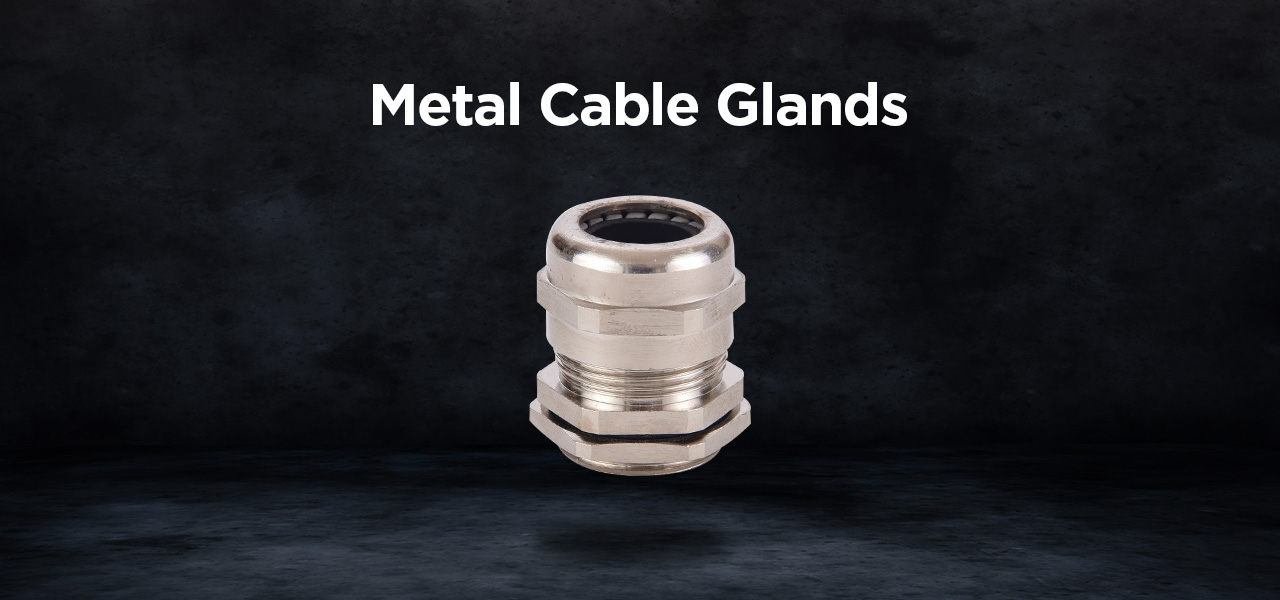
Cable glands are essential components in various electrical installations, ensuring safe and reliable connections between cables and equipment. Whether in industrial or residential applications, selecting the right cable gland types and sizes is critical for optimal performance. Among the most commonly used cable glands are single compression cable glands and double compression cable glands. Although both perform the vital function of sealing and protecting cables, their design and applications vary significantly. This blog explores the difference between single and double compression cable glands, helping you understand their respective features, uses, and components.
A single compression cable gland is the simpler of the two, often used in environments where lower levels of mechanical stress and sealing are required. These glands are ideal for outdoor and indoor installations in controlled environments where the risk of water ingress or high pressure is minimal. Cable gland sizes for single compression glands vary to accommodate different cable diameters, ensuring a snug fit without damaging the cable.
Single Compression Cable Gland Application
Single compression cable glands are primarily used in industrial and residential settings where protection against dust and moisture is needed but where mechanical stress is not extreme. They are typically found in smaller equipment, control panels, and junction boxes. Due to their design, they are more suitable for indoor use, where exposure to hazardous environments is limited. The affordability of single compression cable glands makes them an attractive option for general-purpose applications.
Applications include:
- Control panels
- Electrical junction boxes
- Small machines and appliances
Components of a Single Compression Cable Gland
A single compression cable gland has a straightforward structure that makes it easy to install. Its primary components include:
- Gland Body: The main part of the gland that connects the cable to the equipment.
- Compression Nut: Ensures the tight fit of the cable inside the gland.
- Sealing Ring: Provides a seal to prevent dust and moisture from entering.\
- Locknut: Secures the gland to the equipment.
Each component plays a vital role in the gland’s overall performance, ensuring that the cable remains protected under normal conditions. However, for more challenging environments, a double compression cable gland may be required.
A double compression cable gland is more robust and designed for harsher environments, offering enhanced protection and sealing capabilities. These glands are engineered to prevent the ingress of water, dust, and other contaminants, making them ideal for outdoor applications or industries with higher mechanical stresses.
The design of double compression cable glands allows for a more secure and tight fit compared to single compression glands. In addition to providing external compression, these glands offer internal compression, which enhances their sealing properties. These glands are ideal for industries where cables are exposed to outdoor elements or hazardous environments, providing added protection and longevity.
Double Compression Cable Gland Applications
The applications of double compression cable glands are broader due to their superior sealing properties. They are used in industries like oil and gas, petrochemical, and heavy machinery, where the risk of water ingress, corrosion, or mechanical damage is high. These glands are particularly useful in environments where cables are exposed to dust, moisture, and hazardous chemicals.
Common applications include:
- Outdoor installations
- Petrochemical plants
- Oil and gas industries
- Heavy machinery
Different Parts of Double Compression Cable Glands
The double compression cable gland consists of several components designed to ensure maximum protection:
- Gland Body: The main body that houses the cable.
- Outer Compression Ring: Compresses the outer cable sheath, providing an additional layer of sealing.
- Inner Compression Nut: Tightens the cable within the gland for internal sealing.
- Sealing Washer: Ensures that no water or dust can enter the gland.
- Locknut: Secures the gland to the equipment.
- Earth Tag: Provides grounding to prevent electrical faults.
These additional parts give double compression cable glands their ability to withstand extreme environmental conditions, making them indispensable in industrial settings that demand high levels of protection.
Conclusion
In summary, the key difference between single and double compression cable glands lies in their design, applications, and level of protection. Single compression cable glands are ideal for general-purpose use, offering basic sealing and protection in low-risk environments. On the other hand, double compression cable glands provide enhanced sealing, making them suitable for industries with harsh environmental conditions.
When selecting between these two types, it’s essential to consider factors like cable diameter, the environment, and the level of mechanical stress the gland will endure. Atlas Metal, a leading cable glands manufacturer in Jamnagar India, offers a wide range of cable gland types and sizes to meet your specific needs. Whether you require the simplicity of single compression or the robust protection of double compression, Atlas Metal has the solution for you.
For more information on our selection of cable glands, feel free to explore our catalog or contact us for expert advice.
FAQs
What industries benefit most from using double compression cable glands?
Industries such as oil and gas, petrochemical, and heavy machinery benefit from double compression cable glands due to their superior protection against environmental hazards.
How do I determine the correct cable gland size for my project?
You can refer to the cable gland size chart provided by the manufacturer, ensuring that the gland matches your cable's diameter and environmental requirements.
Are there different materials available for cable glands?
Yes, cable glands come in various materials, including brass, stainless steel, and aluminum. Atlas Metal is a brass components manufacturer in Jamnagar offering high-quality brass cable glands.
What is the role of a sealing washer in double compression cable glands?
The sealing washer provides an additional layer of protection by preventing the ingress of water, dust, and other contaminants.
Can I use single compression glands for outdoor applications?
While single compression glands are suitable for controlled environments, they may not provide adequate protection in outdoor settings where high mechanical stress and moisture are concerns.








